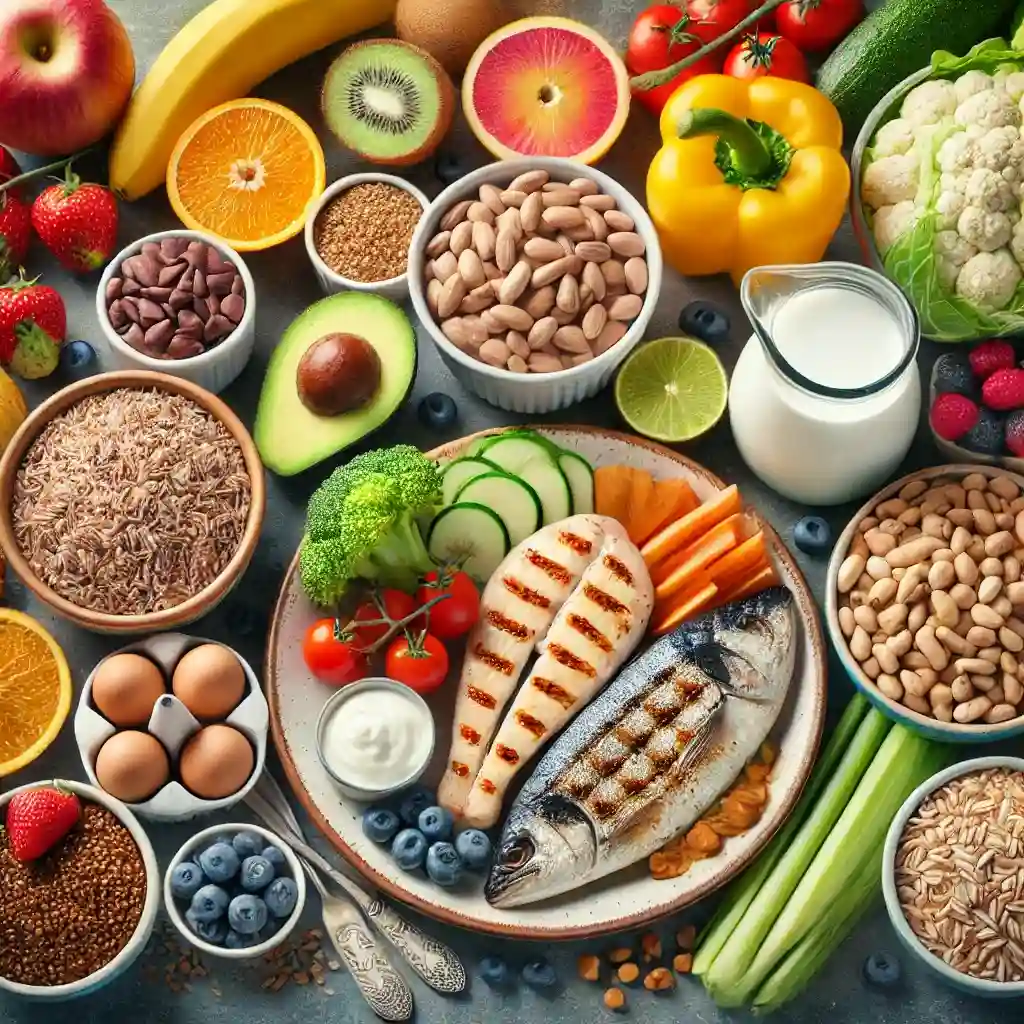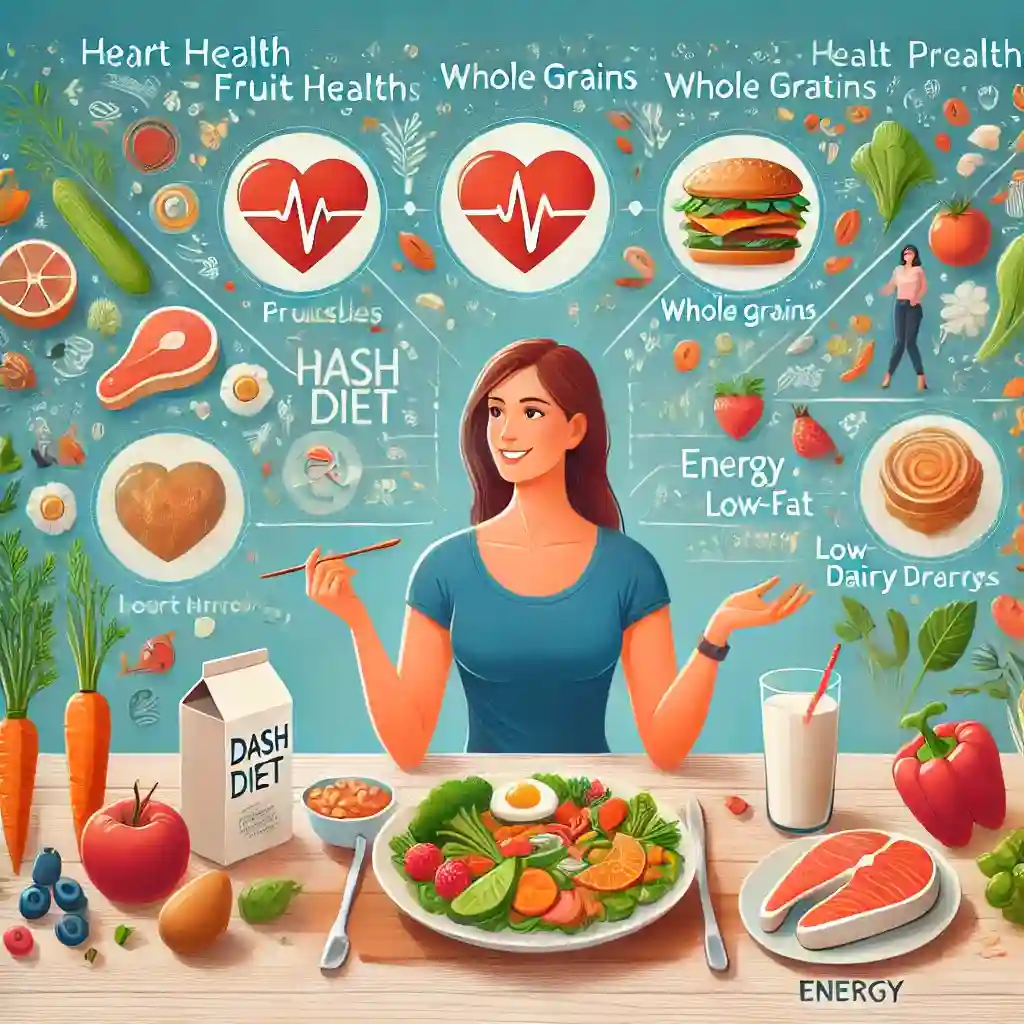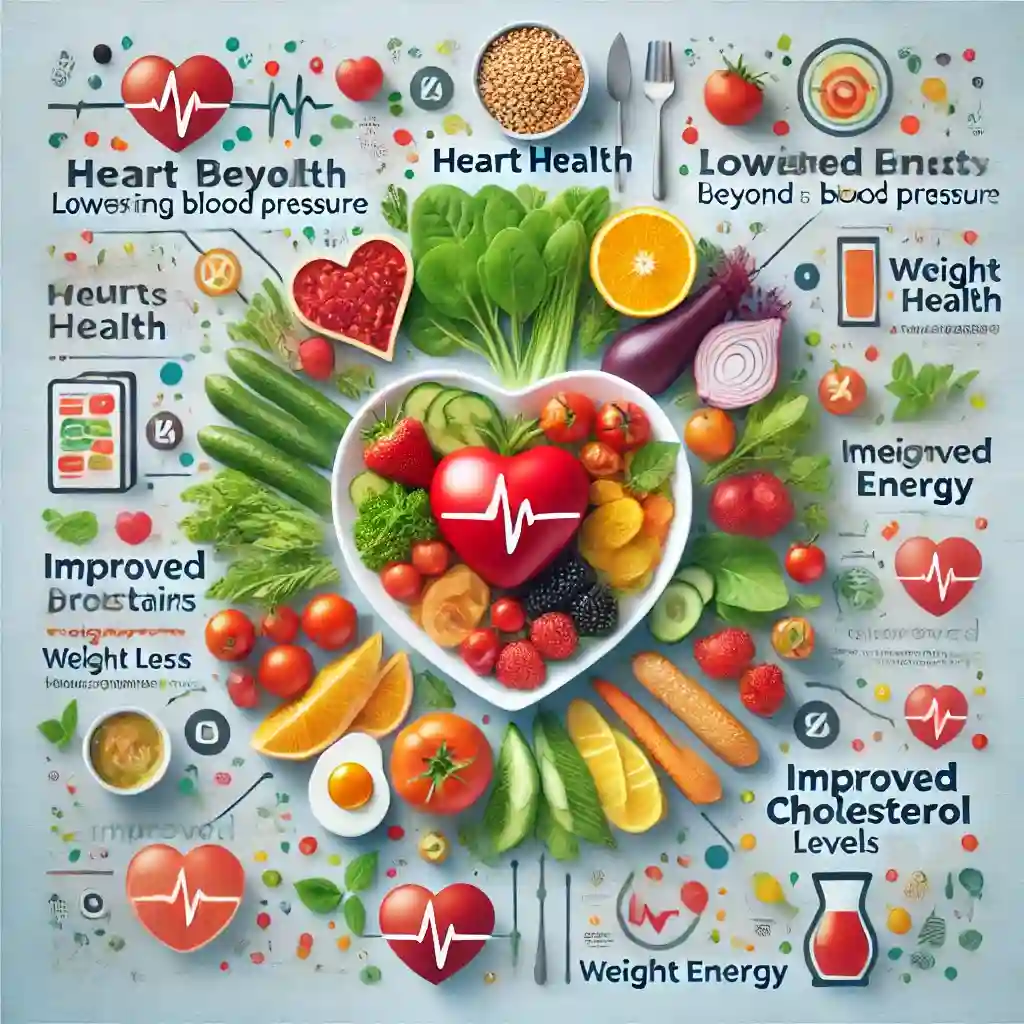The DASH diet (Dietary Approaches to Stop Hypertension) has consistently been rated as one of the best for improving heart health and managing weight. It’s a practical, flexible eating plan focused on real, whole foods. Whether you’re looking to reduce blood pressure, lose weight, or simply eat healthier, this diet can deliver.

In this post, I’ll dive into why the DASH diet works so well and how you can make it a part of your life. If you’re like me, you’ve probably tried other diets that promised quick results but failed to be sustainable. The DASH diet is different, offering a balanced approach that is both effective and easy to stick to long-term.
What is the DASH Diet?
The DASH diet was originally designed to help people lower their blood pressure without medication, but its benefits extend far beyond that. The diet emphasizes eating foods that are rich in:
- Fruits and vegetables
- Whole grains
- Lean proteins like chicken, fish, and beans
- Low-fat dairy products
It also reduces the intake of high-sodium, processed foods, sugars, and red meats, which are known contributors to hypertension and heart disease.
Why the DASH Diet Works
What makes the DASH diet so effective? The diet emphasizes nutrient-dense foods that are rich in potassium, calcium, and magnesium, all of which are essential for maintaining heart health.

By balancing out these key nutrients while reducing sodium, the DASH diet can naturally help regulate blood pressure.
Here are some of the top reasons the DASH diet works:
- Lowering Blood Pressure: By reducing sodium and increasing nutrient-rich foods, blood pressure levels can drop in just a few weeks.
- Weight Loss Friendly: Since the diet focuses on whole, unprocessed foods, it’s naturally lower in calories and can promote healthy weight loss.
- Sustainable Eating Plan: Unlike fad diets, the DASH diet doesn’t require you to eliminate entire food groups. It’s an adaptable plan that you can stick to over time.
- Heart Health Benefits: By focusing on foods that lower cholesterol and reduce sodium intake, the DASH diet supports overall heart health and can help prevent heart disease.
How to Start the DASH Diet
Starting the DASH diet is simpler than it sounds. You don’t have to overhaul your entire lifestyle overnight; small, incremental changes are more sustainable and effective.

Here are some tips to get started:
- Incorporate More Fruits and Vegetables: Aim to fill half your plate with vegetables and fruits. Not only are they low in calories, but they’re packed with nutrients.
- Opt for Whole Grains: Choose whole grains over refined grains. Swap white rice for brown rice or quinoa.
- Eat Lean Proteins: Include lean meats like chicken, turkey, and fish in your meals, or go for plant-based options like beans and lentils.
- Limit Sodium Intake: Try to keep your sodium intake under 2,300 mg per day by avoiding processed foods and reading food labels carefully.
- Stay Hydrated: Drink plenty of water throughout the day and limit sugary drinks.
DASH Diet Meal Plan Example
Here’s a quick example of what a day on the DASH diet might look like:
| Meal | Food |
|---|---|
| Breakfast | Oatmeal with berries, a small serving of low-fat yogurt |
| Lunch | Grilled chicken salad with mixed greens and vinaigrette |
| Snack | A banana and a handful of unsalted almonds |
| Dinner | Baked salmon, steamed broccoli, and quinoa |
| Evening Snack | Low-fat cottage cheese with cucumber slices |
Benefits Beyond Lowering Blood Pressure

While the DASH diet is well-known for its blood pressure-lowering effects, it offers a range of additional health benefits:
- Improved cholesterol levels: Eating heart-healthy fats from nuts, seeds, and fish helps reduce bad cholesterol (LDL).
- Blood sugar management: By focusing on whole foods and avoiding refined sugars, the DASH diet can help regulate blood sugar levels.
- Weight loss: If weight management is your goal, the DASH diet’s emphasis on nutrient-rich, lower-calorie foods can lead to gradual, healthy weight loss over time.
Maintaining the DASH Diet Long-Term
To succeed on the DASH diet, consistency is key. Here are a few tips to make it easier:
- Meal Prep: Preparing meals in advance helps you stick to the diet, even on busy days.
- Gradual Changes: If cutting sodium is difficult, start by making small changes, like using herbs instead of salt for flavor.
- Mindful Eating: Pay attention to portion sizes, and try to eat whole, minimally processed foods.
Once you get into the groove, the DASH diet feels less like a restrictive “diet” and more like a sustainable lifestyle change.
Related Posts:
- The Essential Keto Cookbook – An Informative Introduction
- The Ultimate Guide to Low Carb Indian Foods for Weight Loss and Health
- Dairy-Free Diet
- Diet That Precludes Grains And Dairy Crossword Clue
FAQs
How quickly can the DASH diet lower blood pressure?
Most people see improvements in blood pressure in as little as two weeks after starting the DASH diet.
Is the DASH diet good for weight loss?
Yes, while the diet is primarily designed to lower blood pressure, it can also promote healthy, sustainable weight loss.
Can I follow the DASH diet if I’m a vegetarian?
Absolutely! You can easily modify the DASH diet by focusing on plant-based proteins like beans, lentils, and tofu.
Do I need to avoid salt completely on the DASH diet?
No, the DASH diet doesn’t require you to cut out salt completely, but it does recommend reducing your sodium intake.
Is the DASH diet expensive to follow?
The diet doesn’t have to be costly. By focusing on whole, minimally processed foods, you can keep your grocery bills in check.
How does the DASH diet compare to the Mediterranean diet?
Both are heart-healthy diets, but the DASH diet is more focused on reducing sodium intake, while the Mediterranean diet emphasizes healthy fats like olive oil and fish.